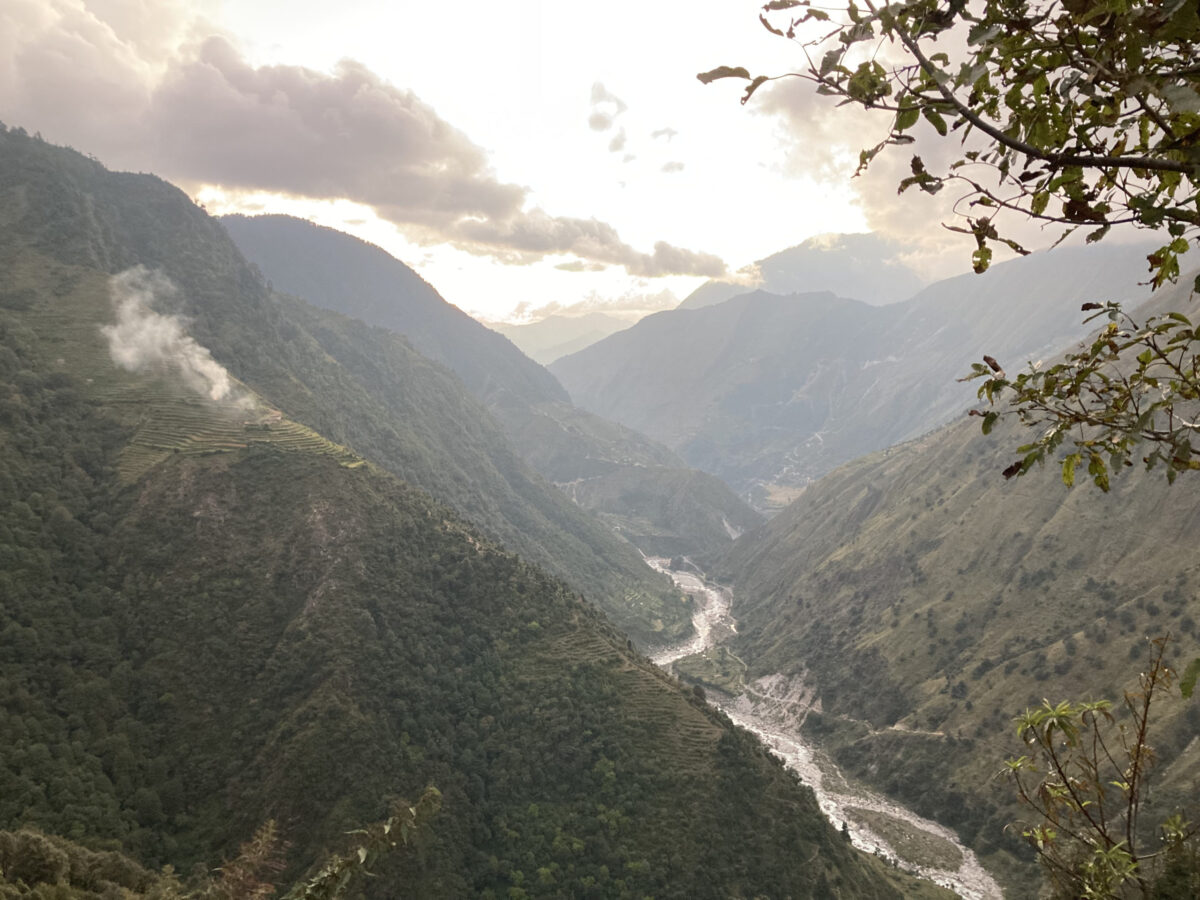Reflections from Nepal
by Ann Armbrecht, PhD,
Director, Sustainable Herbs Program
I returned to Nepal for the first time in 25 years in the fall of 2022.
Since my last visit in 1997 when I had finished research for a doctorate in Social Anthropology, the country has gone through a civil war, a devastating earthquake, and multiple changes of government including the shocking murder of the royal family and the end of the monarchy. These events only compile the global challenges the country also faces from the climate crisis, biodiversity loss, and social and economic inequities.
Urban migration has had a huge impact on the Kathmandu Valley. It is difficult to find accurate statistics, but in 2010 the World Bank reported that Kathmandu was one of the fastest-growing metropolitan areas in South Asia.[1] Pollution – garbage, air pollution, noise pollution – has similarly reached levels of other South Asian cities. Remittances from workers traveling to other countries, in the news recently because of migrant workers building hotels and stadiums to prepare Qatar for the World Cup, now account for one quarter of the country’s income. A national effort is bringing roads to rural areas, which brings access in places that had none before. Yet these roads also have devastating ecological impacts and mixed social-cultural ones.
To me the changes are heartbreaking.
Seeing Beneath the Surface
We came to Nepal to film two initiatives. The first was to document the trade of jatamansi (Nardostachys jatamansi) within Succeeding with CITES, a project led by the global nonprofit TRAFFIC to promote the legal and sustainable international trade of jatamansi and other wild harvested alpine plants. The second was a partnership between two tea brands, Pukka Herbs and Yogi Tea, to invest in a project initiated by the Martin Bauer Group, the ingredient supplier, and the world’s largest supplier of medicinal plants.
I will share more details about these initiatives as I go through the interview footage and we begin producing two videos that will be available later in 2023. I described some initial first impressions in a recent SHP Webinar with the American Botanical Council’s Chief Science Officer, Stefan Gafner, PhD.
The Responsibility of the Botanical Industry
Nepal is the first country I have visited through my work at the Sustainable Herbs Program where I have a depth of knowledge about the history, the culture, the economic, social, and political challenges the country has and continues to face. I wanted to understand what that deeper knowledge might reveal about the more general work I have been doing with SHP via the telling of the stories of the people and places behind finished botanical products.
Because of my background, I was more aware of the challenges the country is facing. In turn, I was struck more by the limits of what any initiatives can do, not their successes. And I left feeling that any company claiming to be investing in sustainable and ethical sourcing can do much, much more to address these challenges at the source.
At the close of our conversation, Stefan invited me to make any final comments about my trip. I spoke about this gap in this final clip from the webinar.
Inner and Outer Development
At one point, we interviewed Tsewang Gyurme, an eleventh generation Tibetan doctor, living in Jomsom, north of Pokhara in Nepal. This was my first trip to Jomsom. I had expected it to be busy but was surprised to see a road running right through the center of the town. Tsewang spoke about his practice and how it is changing. And he spoke about how the community has changed since the coming of the road. “People no longer have time for each other or their neighbors now,” he said. “They are too busy with their business, with outer infrastructure development. And we are losing a lot of inner values. The inner infrastructure is gone.”
I thought about how his observations might apply to the botanical industry and what it takes for companies to do the right thing because it is the right thing to do.
-
“Managing Nepal’s Urban Transition”. World Bank. Retrieved December 15, 2022.


Comments